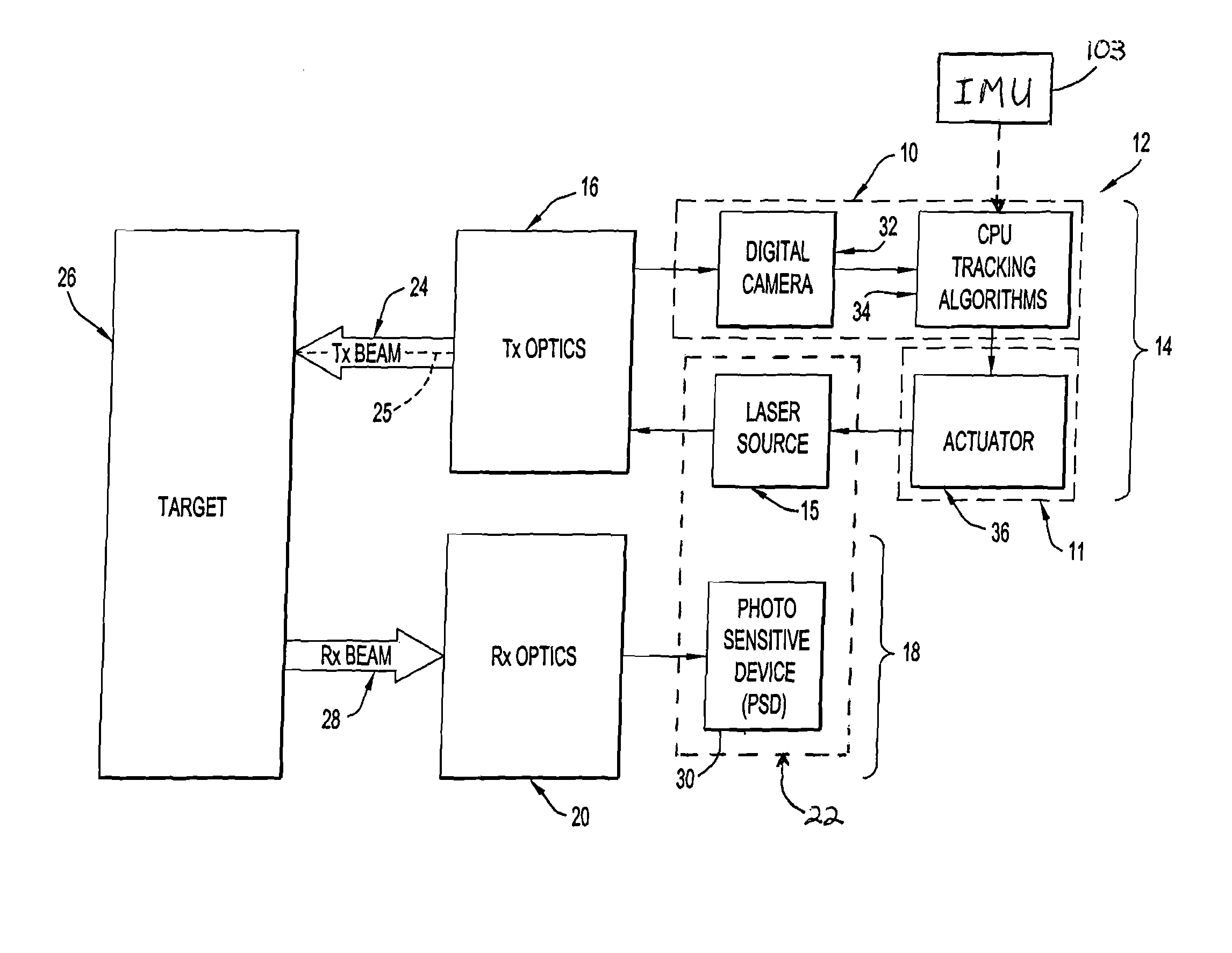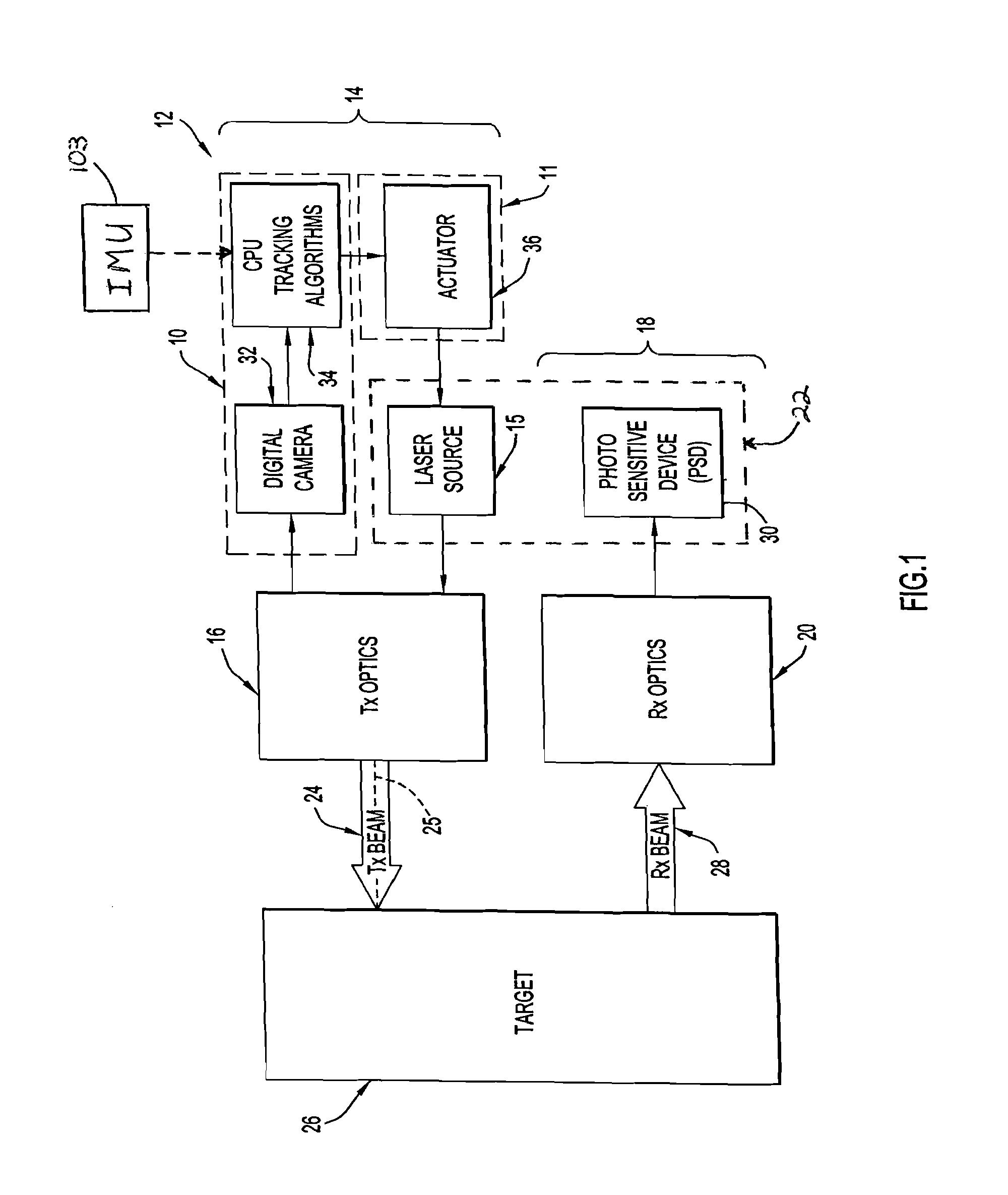If the ammunition detonates too far in front of or behind the target, for example, the effects of the ammunition may miss the target and therefore the target may not be neutralized or destroyed.
However, as explained further below, various circumstances and conditions can make accurate range acquisition difficult to accomplish.
Accurate range acquisition may be especially difficult to accomplish under the conditions and time constraints imposed in military situations where weapons are used and in other similar situations.
Difficulties may arise in range acquisition when the operator of the laser range finder must identify the intended target in the image observed through the
visualization device.
Oftentimes the target is not easily and / or quickly distinguishable by
sight in the image seen by the operator through the
visualization device.
In many cases, for example, it may be very hard for the operator to visually detect, differentiate or discriminate the target from the background and / or from other objects or features contained in the image seen through the
visualization device.
Furthermore, despite
magnification, the target may appear quite small in the image seen through the visualization device due to the target being a considerable distance from the operator.
Consequently, the operator may require more time to study the image and / or may make an error in target identification.
Making an error in target identification may result in acquisition of a range to an object or location that is not the correct intended target.
If this range is relied on to program the
detonation point for ammunition fired from a weapon, the ammunition will not detonate at the optimal location for the correct intended target to be neutralized or destroyed and in fact may cause unintended damage.
Range acquisition may also be more difficult where there is extraneous movement of the operator and / or movement of the intended target.
In particular, manually moving and positioning the scope, and / or the entire
structural unit that the scope is part of, by hand in order to center the scope's
reticle on the target is made considerably more difficult when the operator experiences unintentional extraneous movement and / or when the target is a moving target.
Unintentional extraneous movement of the operator of a laser range finder may be caused by various conditions intrinsic or extrinsic to the operator that result in unintentional movement being imparted to the hand or hands of the operator.
Operators, such as soldiers in an active military situation, facing stressful conditions and / or constantly varying or unpredictable environmental conditions are especially prone to experience unintentional extraneous movement that interferes with the operator's ability to align an intended target with the transmission path of the laser beam to be transmitted from the range finder.
Unintentional extraneous movement of the operator impairs the operator's ability to execute controlled manual movement of the scope and / or other associated structure so that the scope's
reticle, and therefore the transmission path of the laser beam to be transmitted from the range finder, are accurately aimed at the target and makes it very difficult for the operator to hold the scope and / or other associated structure steady in a position where the
reticle, and therefore the transmission path of the laser beam, are accurately aimed at the target long enough to perform range acquisition.
Even in the case of a stationary target, the problems arising from unintentional extraneous movement of the operator increase the time it takes to obtain an accurate range due to the inherent difficulties associated with manually aiming the reticle, and therefore the transmission path of the laser beam, at the target and keeping the reticle and the transmission path of the laser beam aimed at the target long enough to acquire the range to the target.
Accurately aligning the target with the transmission path of the laser beam to be transmitted from the range finder may also be more difficult when the target is in motion due to various conditions intrinsic or extrinsic to the target, and especially when the target is attempting to evade detection.
Similar to the situation where the operator experiences movement, the moving target situation increases the difficulty of range acquisition and increases the time it takes for the operator to obtain an accurate range.
The problems associated with following a moving target are exacerbated when the operator experiences unintentional extraneous movement while at the same time attempting to follow the moving target.
Where the scope is associated with structure, such as a heavy weapon, forming a heavy
structural unit that must be manually moved and positioned in conjunction with aiming the transmission path of the laser beam at the target, the
mass of the
structural unit or associated structure may make it more difficult for the operator to execute the controlled manual movement needed to follow the target, to accurately aim the transmission path of the laser beam at the target, and to maintain the transmission path of the laser beam aimed at the target long enough to acquire the range to the target.
The increased difficulty or demand on the operator arising from the
mass of the structure that needs to be moved and / or the small size of the reticle are exacerbated when the target is in motion and / or when the operator experiences unintentional extraneous movement as described above.
Accordingly, it can be an extremely challenging task for an operator of a laser range finder to correctly identify an intended target and obtain an accurate range or
distance measurement to the intended target, particularly in the event of movement of the target and / or unintentional extraneous movement of the operator, and particularly under the conditions in which laser range finders are often used.
The mechanical calibration process has numerous disadvantages including being tedious, being
time consuming, and being subject to
human error.
In addition to being mechanically and procedurally complicated, the systems contemplated by Livingston are not covert and are not small enough in size to be practically implemented in a manner to assist an operator or soldier operating a hand-held weapon or device.
Rather, the fact that the systems are designed for in-flight missiles requires that they be heavy and large in size.
The steering arrangement disclosed by Ura et al is not one that could be practically miniaturized for use in a hand-held device.
 Login to View More
Login to View More  Login to View More
Login to View More 


